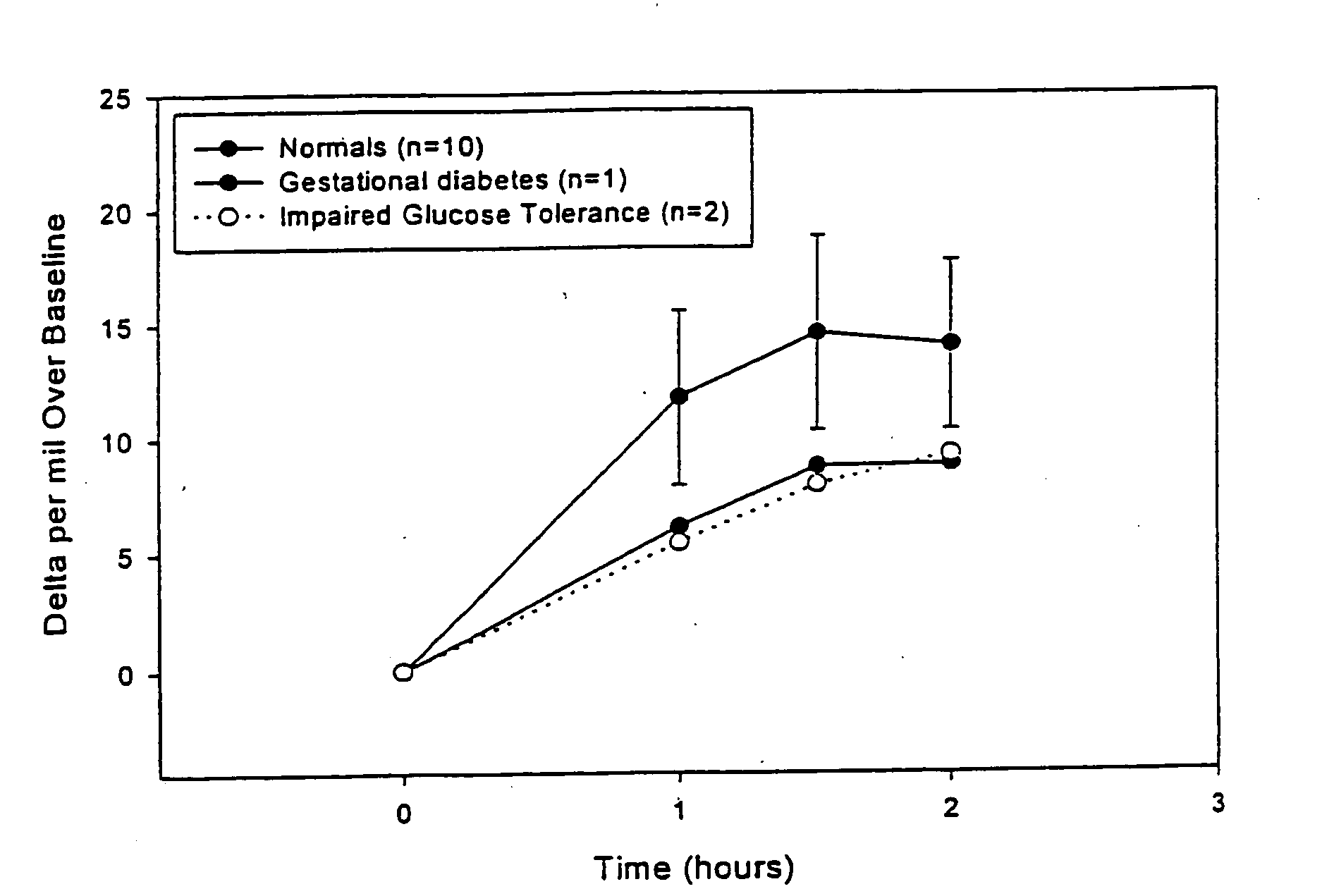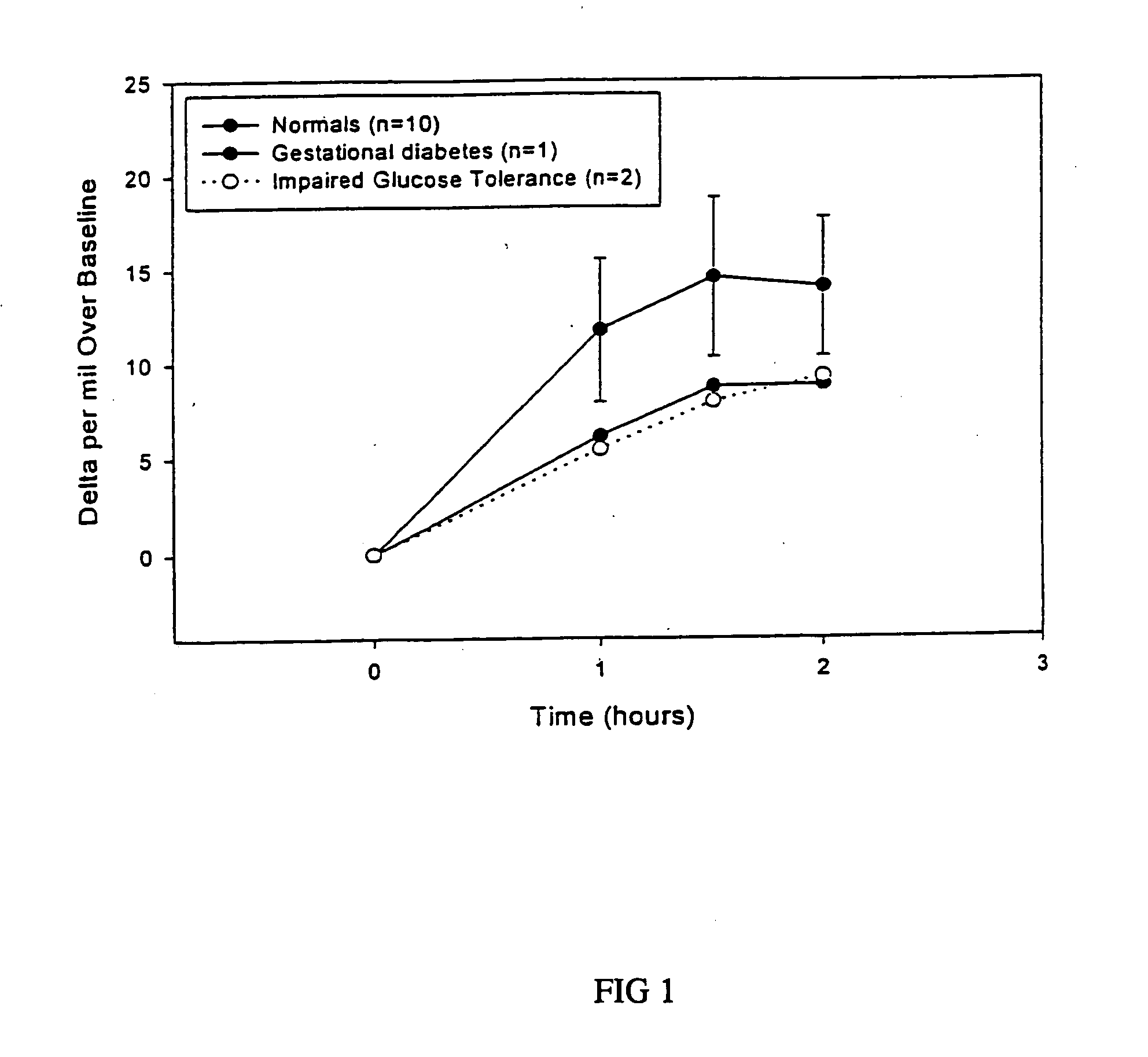13C glucose breath test for the diagnosis of diabetic indications and monitoring glycemic control
a technology of glycemic control and breath test, which is applied in the direction of diagnostic recording/measuring, instruments, applications, etc., can solve the problems of difficult control, poor reproducibility, and criticism of g
- Summary
- Abstract
- Description
- Claims
- Application Information
AI Technical Summary
Benefits of technology
Problems solved by technology
Method used
Image
Examples
example 1
Sample Assay for Diagnosis of a Patient
Experimental Procedure
[0077] Medical history is taken and includes, but is not limited to: the absence of active pulmonary disease, no history of heart, liver, or renal failure, and no use of insulin or oral medications for the treatment of diabetes.
Physical Examination and Laboratory Tests
[0078] No physical examination or laboratory tests, including blood sampling, is required.
Dietary Control
[0079] It is determined that all participants have fasted overnight prior to commencement of the test.
Patient Control
[0080] Participants are not permitted to eat, drink, or smoke during the test. All patients are required to remain sedentary for the duration of the test. Small amounts of water are allowed.
Assay Procedure
[0081] Patients fast for at least 8 hours before this test.
[0082] A sample set of patient instructions is given below:
[0083] Step 1: Collect First Breath Sample [0084] Remove the screw cap from the collecti...
example 2
Breath Test Administration
[0097] Patients are given an exetainer tube with the screw cap removed. Using the straw, they are asked to breathe into the tube, exhaling normally, for 4 to 8 seconds. Next, each patient is instructed to drink a solution containing about 25 mg of uniformly labeled 13C glucose in combination with about 15 g of unlabeled glucose in 100 ml of tap water. After 12 hours, the patients are given a new tube to breathe in as described above. The breath collection is then complete.
Storage and Shipping
[0098] Breath test tubes are typically labeled with the patient's name and identification number and shipped to an analytical laboratory for analysis. No refrigeration or special storage techniques are necessary.
example 3
Analytical Methodology
[0099] Breath specimens are analyzed by isotope ratio mass spectroscopy. NDIRS is also a preferred method to analyze breath test samples. Other methods known in the art may also be used.
[0100] The sensitivity, specificity, positive and negative predictive values of the breath test are compared to that of the oral glucose tolerance test. Receiver operated characteristic curve (ROC) analysis is performed to confirm the discrimination between type 2 diabetes or gestational diabetes and individuals with normal glucose metabolism.
PUM
| Property | Measurement | Unit |
|---|---|---|
| time | aaaaa | aaaaa |
| time | aaaaa | aaaaa |
| time | aaaaa | aaaaa |
Abstract
Description
Claims
Application Information
 Login to View More
Login to View More - R&D
- Intellectual Property
- Life Sciences
- Materials
- Tech Scout
- Unparalleled Data Quality
- Higher Quality Content
- 60% Fewer Hallucinations
Browse by: Latest US Patents, China's latest patents, Technical Efficacy Thesaurus, Application Domain, Technology Topic, Popular Technical Reports.
© 2025 PatSnap. All rights reserved.Legal|Privacy policy|Modern Slavery Act Transparency Statement|Sitemap|About US| Contact US: help@patsnap.com



